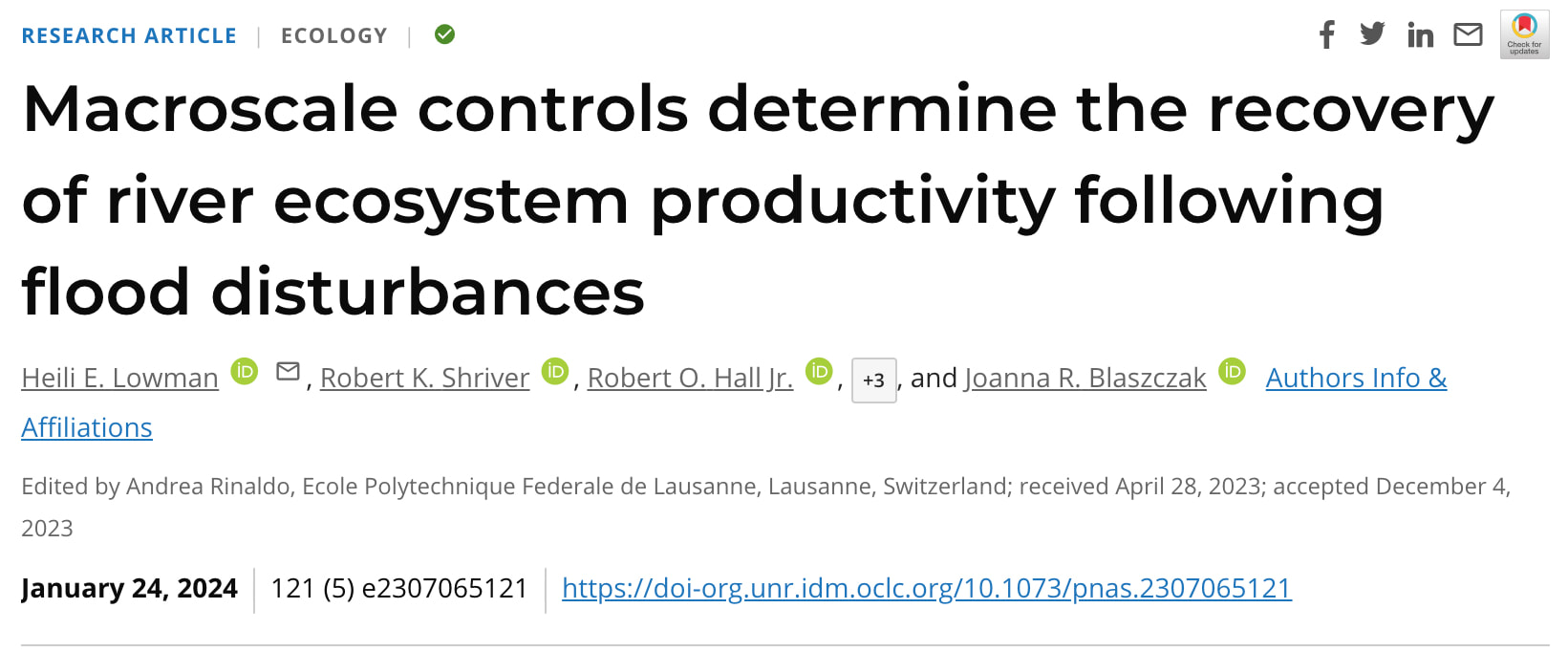|
Just last month, our work examining the recovery of river productivity following disturbance was published in the Proceedings of the National Academy of Sciences. This study took advantage of high-frequency, long-term river metabolism data (Appling et al., 2018) and used a novel modeling approach to estimate algal biomass in rivers (Blaszczak et al. 2023), because this data is otherwise incredibly difficult to collect at such high spatial and temporal resolution. We examined macroscale controls of the recovery of riverine algae and aquatic plants following flood disturbance to help inform future recovery predictions as flow regimes change due to climate change and anthropogenic activities.
Across 143 rivers, we found that the recovery times estimated by this modeling approach (median = 7.3 days) were biologically reasonable compared with studies performed in the field. We also found recovery was fastest in wide rivers, rivers with less influence from upstream dams, and river with more frequent instances of flow disturbance. We also found the disturbance thresholds required to affect productivity showed no relationship with macroscale factors, suggesting that they are instead site-specific and may be due to geomorphological factors such as grain size. I'd like to thank my fantastic co-authors Joanna Blaszczak, Bob Shriver, Bob Hall, Jud Harvey, Phil Savoy, and Charles Yackulic for their assistance on this project. If you are interested, code and related datasets are also published on Zenodo. Please do not hesitate to reach out to me directly if you would like to use this model in your own work and/or would like to discuss the approach further!
0 Comments
Leave a Reply. |
AuthorI am a Postdoctoral Associate in the Department of Biology at Duke University. Archives
February 2024
Categories
All
|
